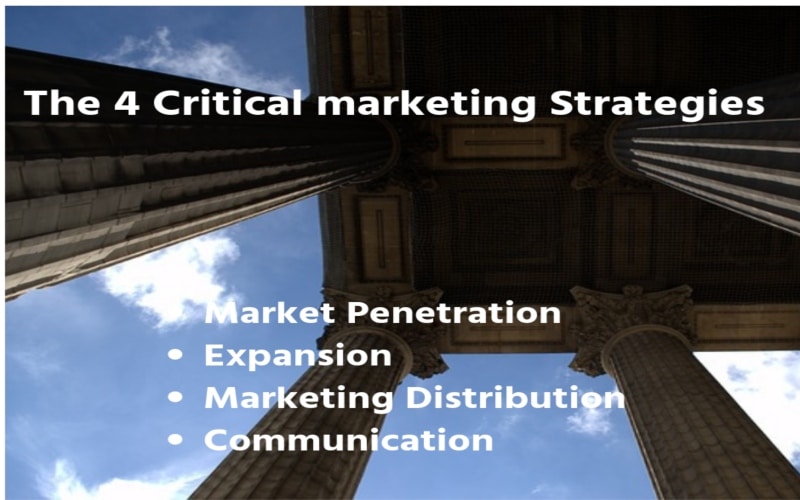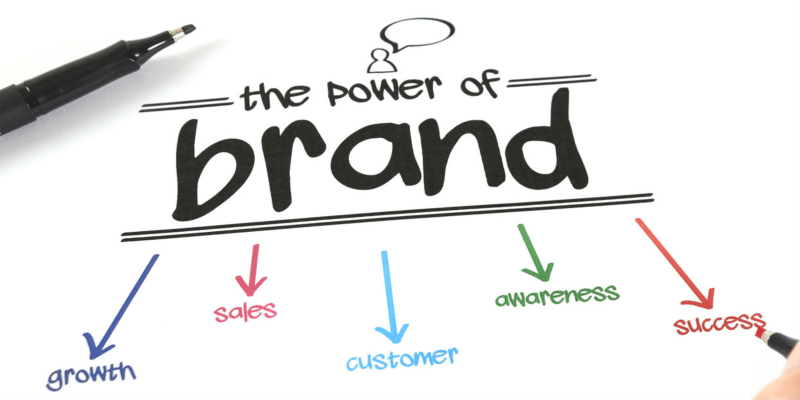The 4 critical marketing strategies that are inherent part of any viable business plan. They are the 4 pillars of your plans and strategies.
With intense competition in every market and every niche, a single most important factor of your business plan, determining success or failure, is how you market your product. Whatever that product may be.
Whether it’s a weekly blog site, eCommerce website with thousands of products, a software development company, or brick and mortar in a high street, the aim is to sell products.
Ever evolving marketing tactics and elements have become more accessible to all businesses. The affordable software, especially at the automation stage, has made it possible to be incorporated into most budgets. Creating opportunities for smaller businesses to have their fair share of the market.
A smart, achievable and realistic marketing strategy that fits the business needs and your budget, is the only way to realise your full potential.
These strategies and tactics will always play a crucial part in any successful campaign.

1. Market Penetration Strategy
As a start-up or an established business aiming to increase or maintain your market share, the first consideration should be your market positioning. How to establish in that market and challenge your competitors.
To implement a highly effective penetration strategy you’ll need all the elements necessary in place. They include;
- Strong brand identity, both visually and in context of your product offering. An image and content that captures the imagination. Your visual brand message that entices that first click.
- Knowing your buyer persona. Targeting the most likely buyers of your product. Knowing their demographics, age, profession, location, and in case you’re an established business, having the required data of previous interactions and purchase history.
- Price positioning is a widely used tactic in market penetration. It means pricing that reflects product quality, distribution cost and customer service, and it doesn’t necessarily mean undercutting the competition. Although it would be of great advantage where possible, without compromising quality.
- Unique sale proposition. What are you offering that others don’t? Whatever it takes to stand out from the rest! Bringing together all the above elements, price, targeting, quality product, customer service, enticing content and brand identity.

2. Expansion Strategy
How to obtain a larger slice of the market, it’s not only the for growing your business but also a necessary strategy for maintaining your present position and profitability, to compensate the decreasing market share caused by ever-growing competition.
A successful growth strategy is a combination of various marketing strategies and tactics, most of which are, or be implemented in your overall marketing plan, and they include;
- The product and market expansion in conjunction with the penetration strategy of the new markets, using the communication elements and available marketing channels.
- Having clear and defined goals for your business, so to manage the necessary expansion.
- Define your present income stream, cut and deal with elements that are not financially viable.
- Study your competitor’s strengths, so to implement the effective processes in your own business and look at their weakness, to avoid pitfalls.
- Invest in the right people to deliver your strategy and desired outcome for your business.

3. Marketing Distribution Strategy
The information delivery of your products to your audience creating awareness, relevant in terms of marketing, at a point that you have all other elements in place.
With your overall marketing strategy in place, your brand defined, your product and all related information on your website, it’s time to let your targeted audience know that you’re open for business.
There are varied channels for broadcasting your product offering, and you need to decide which ones work the best for your purpose. Not all need to be actioned at once, and not all might suit or even be necessary for your product.
It would be best to select the channels, social media platforms that would provide you with a clear and better presentation. They include;
- SearchEngine Marketing. Optimizing a well-developed website, containing your business and product information.
- There are two routes to proceed here. One is the organic route, where your website needs to be search engine optimized (SEO) both on and off-page to achieve any meaningful ranking, you also need to offer visitors/users relevant, useful content on regular basis to engage and entice them to take your desired action.
The second route is the Pay Per Click (PPC) option. Where you pay Google or other search engines, in a keyword bidding process for your website to be placed at the top of search results, above the organic rank listing. - SocialMedia Marketing where you grow your audience by offering content that is specifically designed for that media platform. As mentioned, it would be advisable to choose a platform that is suitable for your purpose. For example, a visually enticing product would perform better on Instagram than Twitter. Choosing the right channel would save you time and money, by avoiding the unnecessary production of multiple contents, that may not even have the desired impact.
- Viral Marketing, highly achievable with big results and low investment. Where you can track the whole process running parallel viral campaigns. Reaching a greater number of people quickly compared to other channels. Use of viral marketing campaigns is on the increase, particularly as the cost of advertising has rocketed.
- Content Marketing is all about understanding your visitors and offering insight and solutions. Its User Experience marketing that will provide you with returning customers and goes a long way in their retention. However, it’s resource intensive and a slow process.
- EmailMarketing plays a critical role in any campaign. Used for generating leads,up-selling, resales, call-to-action and email list building. It binds all your other activities together. Most importantly it is part of an ongoing communication strategy.
- Finally, there is the Traditional Marketing channel that can prove effective through press release announcement, providing a background about you and your business. To have any real impact, it needs to continue through a sustained PR campaign.

4. Communication Strategy
Bringing together your business goals in line with your marketing campaign.
Clear, timely, useful and continues communication is part of an overall strategy and should be present throughout your campaign. It starts even prior to your launch, and crucial to ongoing sales, up sales, product information, customer service, customer retention and their return.
Once you know your audience, their preferences, frequency of their visit to your site, how much time they spend, which pages they visit, what they have purchased or their incomplete transactions, you be able to improve their experience by timely and effective communication.
Here is where Email Marketing automation is most effective and necessary.
- With all the knowledge and data at hand, it’s time to gear your approach to their interests. Help them to choose the products that are appealing and of interest.
- Approach them with your unique sales proposition that focuses on solving their problem by meeting their requirements.
- Make compelling offers, based on their information and needs, that is enticing to take your desired action.
- Emotional and motivational appeal that delivers your message.
- Build a long-lasting relationship in a coherent, organized manner with periodic reminders.
- Engage them in the future of your business, so they feel as they are part of your organization.
Please leave your comment and let me know if there are any specifics that you would like me to explain further!